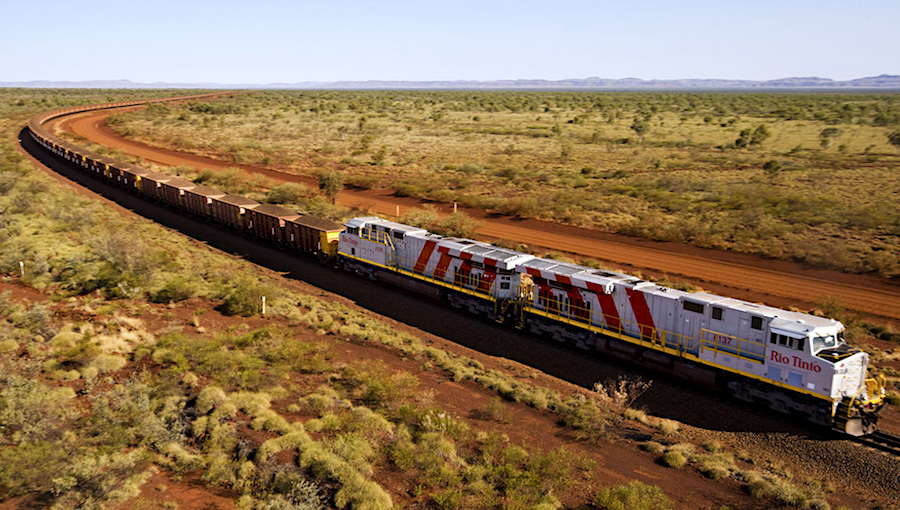
Rio Tinto (ASX, LON:RIO), the world No.2 iron ore miner, is closer than ever to having a network of driverless trains in Western Australia as it has completed its first long-haul journey with a completely autonomous locomotive.
The milestone trip, spanning nearly 100 km (60 miles) with trains operated by individuals in an air-conditioned control room hundreds of kilometres away, puts Rio Tinto on track for commissioning the so-called AutoHaul project in late-2018, the miner said.
Rio Tinto has completed its first long-haul journey with a completely autonomous locomotive.
The company, one of the first to ever embrace driverless mining vehicles, already runs about 200 locomotives on more than 1,700 km of track, hauling ore from 16 mines to four port terminals.
Rio’s trains began running in autonomous mode in the first quarter of this year and about 50% of its pooled fleet rail kilometres are being completed in autonomous mode, but with drivers on-board.
The company said that 90% of its pooled fleet production tonnes are AutoHaul enhanced, which means they are able to operate continuously without shift changes and improved safety, with trains responding automatically to speed limits and alarms.
Rio Tinto said it has already seen the benefits from AutoHaul in increased train speeds and fewer stops that have cut more than an hour from average journey times.
Getting to this point was not easy. The actual commissioning of the autonomous trains project has been put off a few times, partly due to software problems.
Delays with the implementation of autonomous iron ore trains hurt Rio Tinto’s output in 2016. The miner ended up producing 330 million tonnes, down from the original target of 350 million tonnes.
The so-called Autohaul plan is part of the “Mine of the Future” project the company launched in 2008 and which also included the introduction of autonomous haulage trucks, automated drilling and the roll out of an operations centre near Perth airport.
2 Comments
Ftballplaya99
This isn’t a good thing, corporation are supposed to be in the best interest of the country they are in. They should provide good jobs to to the communities they work in. Its suppose to be a balance. It’s not supposed to be only for profits for the Rich.
If corporation don’t live up to there end of this bargain their corporate charters need to be revoked.
Here in the USA the government is telling us PTC is for safety, but many know it’s really about driverless trains.
PRINCE A D GAISIE
The technological changes affecting the Mining environments started more 20 years ago and it is going ahead not backward . The students learning today must be equipped to come and work in these environments . Transition and Transformation in the mining and mineral processing is continuously going to change as cost dynamics are also changing.